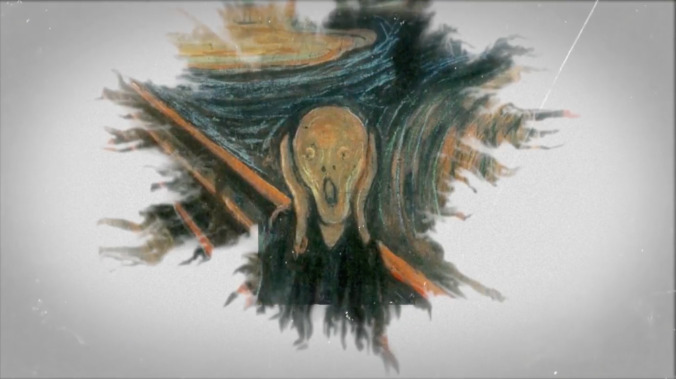
There are two silent-era films that almost always get mentioned in any discussion of horror cinema. The first is Nosferatu. The second is The Cabinet Of Dr. Caligari. That second film is an integral part of the first video from the new horror-themed YouTube channel Something Ghoulish, not just because it’s a recognized classic, but because it forms a definitive link between the 20th century horror film aesthetic and the German Expressionist movement of the late 1800s.
Expressionism came out of the angst and anxiety of the working class in Europe at the end of the century. Paintings from this time were experimental, featured jagged, jarring compositions, and, as Something Ghoulish notes, “prioritized the raw emotional evocation rather than the reality of the subject.” This violent aesthetic continued to evolve as Germany and the rest of Europe were thrown into the chaos of World War I and the rise of authoritarianism that followed. That’s when screenwriters Hans Janowitz and Carl Mayer got their idea for a story about a hypnotist name Dr. Caligari and the evil acts that he would commit.
Utilizing the same jagged lines and elongated shadows, Dr. Caligari’s visuals are like Expressionist paintings come to life. The international popularity of the film all but guaranteed that this aesthetic would be linked to the burgeoning horror genre, which exploded in America thanks to the Universal monster pictures. As for how the look and feel of horror evolved over time, we’ll have to wait for Something Ghoulish’s next video to find out.
Send Great Job, Internet tips to [email protected]